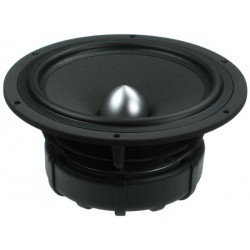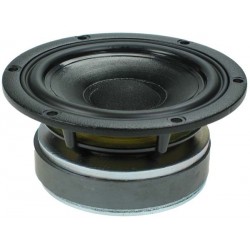






No products
Prices are tax included

audiohobby
Woofers
- Lundahl transformers
- Lundahl Tube output
- Lundahl Moving coil input
- Lundahl Input and DC-free line output application
- Lundahl Anode chokes, interstage and line output
- Lundahl Mains transformers
- Lundahl Chokes for tube amp power supply or filament current supply
- Lundahl General purpose
- Lundahl Microphone transformers
- Lundahl Line input
- Lundahl Line output transformers
- Lundahl Problem solvers
- Lundahl Digital Audio
- Lundahl Transformers for telephone hybrids, for 100V PA systems
- Lundahl Video transformers
- Lundahl Metal Housings
- Lundahl Amorphous core output transformers
- Lundahl other audiophile type transformers
- Capacitors
- Mundorf ECap
- Mundorf MCap
- Mundorf MCap RXF
- Mundorf MCap ZN
- Mundorf MCap SUPREME
- Mundorf MEAI
- Mundorf MEAIO
- Mundorf MESGO
- Mundorf MCap SUPREME silver/oil
- Mundorf MCap SUPREME silver/gold
- Mundorf MCap SUPREME silver/gold/oil
- Mundorf TubeCap
- Mundorf MLytic HV
- Mundorf MLytic AG
- Mundorf MLytyc HC
- Auricap XO
- Jantzen Audio MKT Cap
- Jantzen Audio Cross Cap
- Jantzen Audio Standard Z-Cap
- Jantzen Audio Superior Z-Cap
- Jantzen Audio Silver Z-Cap
- Jantzen Audio Copper Foil Amber Z-Cap
- Jantzen Audio Alumen Z-Cap
- Jantzen Audio SilverGold Z-cap
- Rike Audio S-cap Paper in Oil
- Mundorf Mlytic HC+ (4-pole)
- Mundorf MLytiv HV+ (4-Pin High Voltage Power Cap)
- Mundorf MCap SUPREME EVO
- Mundorf MCap SUPREME EVO Oil
- Mundorf MCap SUPREME EVO SilverGold
- Mundorf MCap SUPREME EVO SilverGold Oil
- Mundorf MLytic AG+
- RIKE Audio Q-Cap Copper Oil Polypropylen Capacitors
- RIKE Audio Oil-Paper-Capacitors - S-Cap 2
- Rike Audio Q-CAP2 PIO Copper Paper Oil capacitors
- Miflex Audio Capacitors
- Coils
- Mundorf M-Coil
- Mundorf M-Coil BV
- Mundorf M-Coil VL
- Mundorf MCoil VNCU ZeroOhm (resin-soaked)
- Mundorf M-Coil LL Hepta Strand
- Mundorf M-Coil CF
- Mundorf M-Coil transformer-core
- Mundorf M-Coil CF transformer-core
- Mundorf M-Coil BV transformer-core
- MCoil VT transformer-core vacuum impregnated
- Mundorf M-Coil CF i-core
- Mundorf M-Coil BV i-core
- Mundorf M-Coil drum-core
- Mundorf M-Coil drum-core BV
- Mundorf M-Coil pin-core
- Mundorf M-Coil rod-core
- Mundorf M-Coil BV rod-core
- Mundorf M-Coil CF rod-core
- Mundorf M-Coil zero-ohm
- Mundorf M-Coil CF silver
- Mundorf M-Coil silver/gold
- Jantzen Air Cored Wire Coil
- Jantzen 13AWG 1,8mm Air Core Coils
- Jantzen 14AWG 1,6mm Air Core Coils
- Jantzen 15AWG 1,4mm Air Core Coils
- Jantzen 17AWG 1,2mm Air Core Coils
- Jantzen 18AWG 1,0mm Air Core Coils
- Jantzen 20AWG 0,8mm Air Core Coils
- Jantzen 21AWG 0,7mm Air Core Coils
- Jantzen 22AWG 0,63mm Air Core Coils
- Jantzen 24AWG 0,5mm Air Core Coils
- Jantzen 26AWG 0,4mm Air Core Coils
- Jantzen 29AWG 0,3mm Air Core Coils
- Jantzen Audio Wax Coil
- Jantzen Iron Cored Coils With Discs
- Jantzen 13AWG 1,8mm Iron Cored Coils with Discs
- Jantzen 14AWG 1,6mm Iron Cored Coils with Discs
- Jantzen 15AWG 1,4mm Iron Cored Coils with Discs
- Jantzen 17AWG 1,2mm Iron Cored Coils with Discs
- Jantzen 18AWG 1mm Iron Cored Coils with Discs
- Jantzen 20AWG 0,8mm Iron Cored Coils with Discs
- Jantzen 21AWG 0,7mm Iron Cored Coils with Discs
- Jantzen 22AWG 0,63mm Iron Cored Coils with Discs
- Jantzen 24AWG 0,5mm Iron Cored Coils with Discs
- Jantzen 26AWG 0,4mm Iron Cored Coils with Discs
- Jantzen 29AWG 0,3mm Iron Cored Coils with Discs
- Jantzen C-Coil - Toroidal Core
- Jantzen Audio Cross Coil
- Jantzen Audio Iron Coil
- Jantzen Audio Iron Coil 13AWG
- Jantzen Audio Iron Coil 14AWG
- Jantzen Audio Iron Coil 15AWG
- Jantzen Audio Iron Coil 17AWG
- Jantzen Audio Iron Coil 18AWG
- Jantzen Audio Iron Coil 20AWG
- Jantzen Audio Iron Coil 21AWG
- Jantzen Audio Iron Coil 22AWG
- Jantzen Audio Iron Coil 24AWG
- Jantzen Audio Iron Coil 26AWG
- Jantzen Audio Iron Coil 29AWG
- Jantzen Audio Litz Wire Wax Coil
- Mundorf MCoil VLCU
- Mundorf MCoil VSCU
- Mundorf MCoil VS iCore (resin-soaked)
- Parts for x-over assembling
- Resistors
- Solder
- Wires, plugs, terminals and more
- Interconnect Cable
- Speaker Cable
- Power Cable
- Phono & Tonarm cables
- Hook up Wire
- DH-Labs connectors
- WBT Connectors
- Mundorf M-Connect LS plugs
- Mundorf M-Connect terminals
- Mundorf M-Connect CF
- Mundorf M-Connect silver/gold SGW
- Mundorf M-Connect NF Plugs
- Jantzen Speaker Terminals
- Jantzen Port Tubes
- Damping Materials
- Waveguides and adapters
- Speaker Spikes
- Jantzen audio cables
- Wattgate Power Connectors
- Speaker grill cloth
- Headphone cable and connectors
- Heatshrinks, braided sleves for DIY cable
- Speaker jumpers and terminal bridges
- Speaker building accessories
- Kimber Kable
- Furutech
- ETI Research connectors
- Oyaide
- RCA Sockets
- AudioQuest
- AudioQuest DAC
- AudioQuest USB Extenders and Adaptors
- AudioQuest Power Cables
- AudioQuest Power Conditioners
- AudioQuest Accessories
- AudioQuest Speaker Cables
- AudioQuest Audio Interconnect Cables
- AudioQuest Subwoofer Cables
- AudioQuest Tonearm Cables
- AudioQuest Turntable Cables
- AudioQuest Vinyl and Headphone Accessories
- AudioQuest HDMI Cables
- AudioQuest USB Cables
- AudioQuest Optical Cables
- AudioQuest Digital Coax Cables
- AudioQuest AES/EBU (Balanced) Cables
- AudioQuest Ethernet Cables (RJ/E)
- AudioQuest SureGrip® Speaker Connectors
- AudioQuest CL3/FT4 In-Wall Rated Bulk Audio Interconnect Cables & Plugs
- AudioQuest Spade, Pin, and Banana Connectors
- AudioQuest Instant Tool-less Connectors (ITC) for Analog-Audio, Mini-Coax, and RG6 Cables on Spools
- AudioQuest CL3/FT4 In-Wall Rated Bulk Speaker Cables
- AudioQuest Bulk Speaker Cables — Not In-Wall Rated
- AudioQuest CL3/FT4 In-Wall Rated Bulk CAT6 and CAT7 Ethernet Cables & Plugs
- Nordost
- Nordost power cords
- Nordost analog Interconnects
- Nordost subwoofer cables
- Nordost iKables
- Nordost BLUE HEAVEN headphone cables
- Nordost Ethernet-HDMI-4K-USB
- Nordost digital Interconnects
- Nordost tonearm cables
- Nordost speaker cables
- Nordost QRT – Audio Enhancers
- Nordost Sort Systems – Resonance Control
- Nordost Bulk-Specialty
- Nordost Accessories-Apparel
- Audience AV
- Power supply cables/accessories
- Kits, DIY and Loudspeaker upgrade kits
- Speaker Drivers
- Tweeters
- Midrange Drivers
- Fullrange
- Coaxial Drivers
- Midwoofer Drivers
- Woofers
- Passive Radiators
- Subwoofers
- Car Audio drivers
- Scan-Speak Discovery
- Scan-Speak Classic
- Scan-Speak Revelator
- Scan-Speak Illuminator
- Seas Prestige
- Seas Excel
- Seas Exotic
- Seas Lotus
- Design by SEAS
- SB Acoustics
- SB Acoustics Tweeters
- SB Acoustics Midrange
- SB Acoustics Midwoofer
- SB Acoustics Woofers
- SB Acoustics Passive radiators
- SB Acoustics Subwoofer
- SB Acoustics Satori
- Accuton
- Audiotechnology
- Mundorf Hi-Fi AMT U Series tweeters
- Speaker driver accessories
- Monitor Audio
- Loudspeakers
- Metrum Acoustics DACs
- Soldering and termination services
- Soundcare spikes
- Hi-Fi and Hi-End equipment
- Mediaplayers
- Amplifiers
- Speakers
- Vinyl Players
- Earthequake Sound Home Audio
- Earthequake Sound Car Audio
- Earthequake Sound Gaming Audio
- Earthequake Sound Pro Audio
- Sonnet digital audio
- Power conditioners and distributers
- Streamers
- Portable headphone amplifiers
- Fuses and fuse holders
- Headphone Amplifiers
- DACs
- CD/SACD-players
- Turntables
- Tonearms
- Accessories
- Plate amplifiers, modules, power supplies
- DIY Amplifier modules
- DSP devices
- Services
- Accuton
- Analog Manufaktur Germany
- Anthem
- Audes
- Audience
- Audiobyte
- AudioQuest
- AudioTechnology
- Bliesma Audio
- Bluesound
- Bryston
- Clearaudio
- DALI
- Dayton Audio
- Denon
- DH-Labs
- Duelund Audio
- Dune HD
- Dynaudio
- Earthquake Sound
- ELAC
- Electrocompaniet
- ETI Research
- Eversolo
- Feickert Analogue
- Ferrum Audio
- Fountek
- Furutech
- Hegel
- Hi-Fi Tuning
- HiVi
- Hypex electronics
- IsoAcoustics
- Jantzen Audio
- Kimber Kable

A woofer is a technical term for loudspeaker driver designed to produce low frequency sounds, typically from 60 Hz up to 250 Hz. The name is from the onomatopoeic English word for a dog's bark, "woof"[citation needed] (in contrast to the name used for speakers designed to reproduce high-frequency sounds, tweeter). The most common design for a wo...
A woofer is a technical term for loudspeaker driver designed to produce low frequency sounds, typically from 60 Hz up to 250 Hz. The name is from the onomatopoeic English word for a dog's bark, "woof"[citation needed] (in contrast to the name used for speakers designed to reproduce high-frequency sounds, tweeter). The most common design for a woofer is the electrodynamic driver, which typically uses a stiff paper cone, driven by a voice coil surrounded by a magnetic field. The voice coil is attached by adhesives to the back of the speaker cone. The voice coil and the magnet form a linear electric motor. When current flows through the voice coil, the coil moves in relation to the frame according to Fleming's left hand rule for motors, causing the coil to push or pull on the driver cone in a piston-like way. The resulting motion of the cone creates sound waves, as it moves in and out. At ordinary sound pressure levels (SPL), most humans can hear down to about 20 Hz.[1] Woofers are generally used to cover the lowest octaves of a loudspeaker's frequency range. In two-way loudspeaker systems, the drivers handling the lower frequencies are also obliged to cover a substantial part of the midrange, often as high as 2000 to 5000 Hz; such drivers are commonly termed mid woofers.
WoofersThere are 95 products.
Subcategories
Seas Excel Woofers
SB Acoustics Woofers
SB Acoustics woofer (aluminum cone woofer, 8 ohm impedance) cone was formed with geometric features to reduce resonance and improve rigidity. The woofer has a rigid cast frame with ventilated spider and large vented pole piece. A low damping rubber surround assures decent midrange reproduction. A shorting ring is used in the motor to reduce intermodulation distortion and improve inductance symmetry.
Seas Prestige Woofers
Woofer Seas Excel E0042-08S W18NX001
Woofer Seas Excel E0042-08S W18NX001
237,90 €In Stock
195,00 € tax excl.***Woofer Seas Excel E0022-08S W22EX001
Woofer Seas Excel E0022-08S W22EX001
425,78 €In Stock
349,00 € tax excl.***Woofer Seas Excel E0015-08S W15CY001
Woofer Seas Excel E0015-08S W15CY001
339,16 €In Stock
278,00 € tax excl.***Woofer Seas Prestige H1456-08 ER18RNX
Woofer Seas Prestige H1456-08 ER18RNX
143,96 €In Stock
118,00 € tax excl.***Woofer Seas Prestige H1571-08 U18RNX/P
Woofer Seas Prestige H1571-08 U18RNX/P
145,79 €In Stock
119,50 € tax excl.***Woofer Seas Prestige H1215-08 CA18RNX
Woofer Seas Prestige H1215-08 CA18RNX
100,65 €In Stock
82,50 € tax excl.***Woofer Seas Excel E0041-08S W15LY001
Woofer Seas Excel E0041-08S W15LY001
189,10 €In Stock
155,00 € tax excl.***Woofer Seas Prestige H1216-08 CA15RLY
Woofer Seas Prestige H1216-08 CA15RLY
118,34 €In Stock
97,00 € tax excl.***Woofer Seas Prestige H1288-08 CA22RNX
Woofer Seas Prestige H1288-08 CA22RNX
120,78 €In Stock
99,00 € tax excl.***Midbass Seas Prestige H1152-08 CA12RCY
Midbass Seas Prestige H1152-08 CA12RCY
84,36 €In Stock
69,15 € tax excl.***Midbass Seas Prestige H1207-08 L12RCY/P
Midbass Seas Prestige H1207-08 L12RCY/P
79,30 €In Stock
65,00 € tax excl.***Midbass Seas Prestige H1304-08 MCA12RC
Midbass Seas Prestige H1304-08 MCA12RC
82,96 €In Stock
68,00 € tax excl.***
New products
-

SB Acoustics 5" Satori TeXtreme midrange 4Ohm, MR13TX-4
SB Acoustics 5" Satori TeXtreme midrange 4Ohm, MR13TX-4
283,04 €
232,00 € tax excl.*** -

SB Acoustics 6.5" Satori TeXtreme midrange 8Ohm, MR16TX-8
SB Acoustics 6.5" Satori TeXtreme midrange 8Ohm, MR16TX-8
319,64 €
262,00 € tax excl.*** -

WBT Nextgen Pole terminal, WBT-0707 Cu (1pcs)
WBT Nextgen Pole terminal, WBT-0707 Cu (1pcs). Price for 1 piece.
34,10 €
27,95 € tax excl.*** -

Turntable Firebird, Dr. Feickert Analogue
belt-drive turntable, 3 motors, 2 tonearms quick-release system for...
10 990,00 €
9 008,20 € tax excl.*** -

Turntable Blackbird, Dr. Feickert Analogue
belt-drive turntable, 2 motors, 2 tonearms quick-release system for...
6 590,00 €
5 401,64 € tax excl.*** -

Dr. Feickert Analogue Linear power supply
linear regulated, low noise power supply for DFA turntables and Vitesse,...
899,00 €
736,89 € tax excl.*** -

Dr. Feickert Analogue Vero S Phono-preamplifier
Phono-preamplifier, 6 inputs /2 MM + 2 MC + 2 line-in/, remote control...
4 990,00 €
4 090,16 € tax excl.*** -

Dr. Feickert Analogue Magic Mat
Dr. Feickert Magic Mat Anti-Static Record Mat
99,00 €
81,15 € tax excl.***
-

Wavecor silk dome tweeter TW030WA07, 8 Ohm
Wavecor silk dome tweeter TW030WA07,...
56,61 € -20% 70,76 €
46,40 € tax excl.***
















